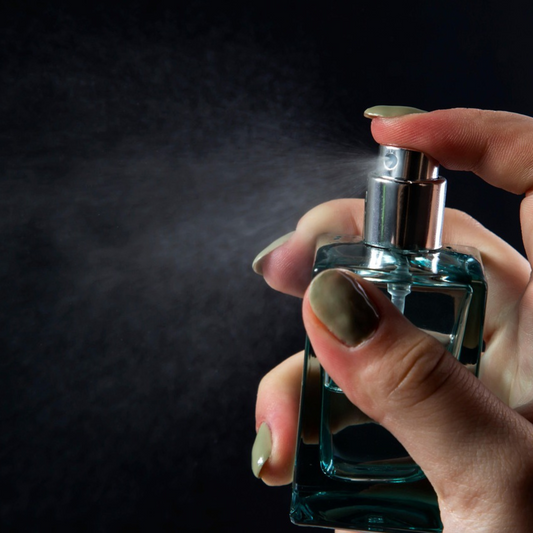🧭 Introduction: Why This Article Exists
Most articles on how perfumes are made are charming — but shallow. They tell a story, but they don’t teach.
This is not that.
This is for the fragrance enthusiast who wants to understand the deep craft — from terroir and molecule interaction to aging curves and composition volatility. Whether you’re a seasoned reviewer or an olfactive explorer, this is a look beneath the surface.
Let’s trace the journey of a true artisanal perfume — not from “flower to bottle,” but from climate to chord, molecule to maturation.
🌍 Step 1: Origin Matters — Terroir in Perfumery
Yes, terroir isn’t just a wine thing.
The exact soil, climate, and elevation where a plant grows radically shapes its olfactory profile.
Case in point: Vetiver from Haiti smells drier, cleaner, and more transparent than vetiver from Java, which leans smokier and rootier — because of differing clay content, rainfall patterns, and altitude.
Artisan houses source from micro-climates, not just “countries.” The more terroir-specific the ingredient, the more unique and unpredictable its nuance.
🧪 Not commonly known:
-
Rose oil from Taif, Saudi Arabia, contains unusually high levels of citronellol and geraniol, giving it a sharper metallic-floral edge compared to Bulgarian or Turkish rose.
🧪 Step 2: Extraction — Molecules, Methods & Trade-offs
Fragrance lovers often hear “steam distilled” or “cold-pressed,” but the choice of extraction method is chemical warfare.
🧴 Key methods & molecular impact:
-
Steam distillation: Good for hardy herbs (lavender, rosemary). Heat can destroy delicate top notes.
-
Solvent extraction: Captures fragile florals like jasmine or tuberose, but introduces trace solvent residues unless further purified.
-
CO₂ extraction: Clean, modern, and preserves full-spectrum aroma — ideal for niche earthy or resinous materials like frankincense or ginger.
Example: CO₂-extracted ginger smells less “spicy” and more “green-fresh” than steam-distilled ginger because of preserved zingiberene and shogaols.
⚠️ Artisanal decision:
A true nose may blend multiple extracts of the same botanical (e.g., steam + CO₂ vetiver) to sculpt its olfactive shape in the composition.
🎨 Step 3: Composition — Olfactive Chords, Not Notes
Forget “top, heart, base” — that’s just a pyramid. The real artistry lies in chords.
Perfumers build scents like music, combining notes that interact rather than just layer.
🎼 Olfactive chord building:
-
A floral chord might include rose absolute, phenylethyl alcohol, and geranium — balanced by a subtle green aldehyde to lift.
-
A suede chord may mix isobutyl quinoline with saffron, orris, and castoreum to evoke tactile warmth and powder.
Deep tip: Skilled noses “bend” naturals with synthetics to sculpt texture, projection, or longevity without over-relying on synthetics.
🕰️ Step 4: Maceration, Aging & Olfactive Fusion
Here’s a rarely discussed truth: raw perfume concentrate smells unfinished.
After formulation, most artisan perfumes undergo maceration — aging the blend in alcohol to allow chemical stabilization and note integration.
🧠 What happens in aging?
-
Volatile top notes calm down, softening their sharp edges.
-
Molecules like musks and woods bloom slowly into the blend.
-
Fixatives help link base molecules to heart materials, forming olfactive bridges.
Artisan truth: Aging times vary. Some houses age for 2 weeks. Others? 6 months. It depends on the complexity of ingredients and desired roundness.
🧴 Step 5: The Silent Details — Filtration, Bottling, and Non-Olfactive Craft
Fragrance lovers often skip this step. They shouldn’t.
🧊 Filtration:
Some oils (orris, ambrette) can cloud in cold conditions. Artisan perfumers may use cold filtration to polish clarity without stripping aroma compounds.
🧴 Bottling:
A good artisan brand won’t use plastic pipettes — they’ll hand-fill with glass. Why? Because certain materials (like aldehydes) react with polymers.
Packaging also reflects philosophy: recyclable glass, minimal adhesives, UV-proof coatings — every choice protects the molecular integrity of the blend.
🌬️ Final Act: Wearability ≠ Simplicity
Great perfumes are not just wearable. They are complex, evolving, alive. They defy instant gratification.
True enthusiasts know this:
-
Ambergris evolves over hours, not minutes.
-
Natural oud changes with skin pH.
-
Sandalwood (Mysore) starts creamy, ends smoky, always lingers.
If a perfume stuns you at first whiff and fades into nothing — that’s top-heavy composition.
Artisan perfumery is the opposite: it rewards patience and personal chemistry.
🔍 Final Thought: Why This Depth Matters
When you wear an artisanal perfume, you’re not just wearing a scent. You’re experiencing botanical memory, chemical artistry, and olfactive storytelling all in one.
As a reviewer, a collector, or a lover of fragrance — knowing what’s inside the bottle enriches how you talk about it, feel about it, and share it.
And when you smell it… you’ll know.




1 comment
https://dev-dmnew21.pantheonsite.io/product/jannat-e-zuhur-100ml-oud-perfume/